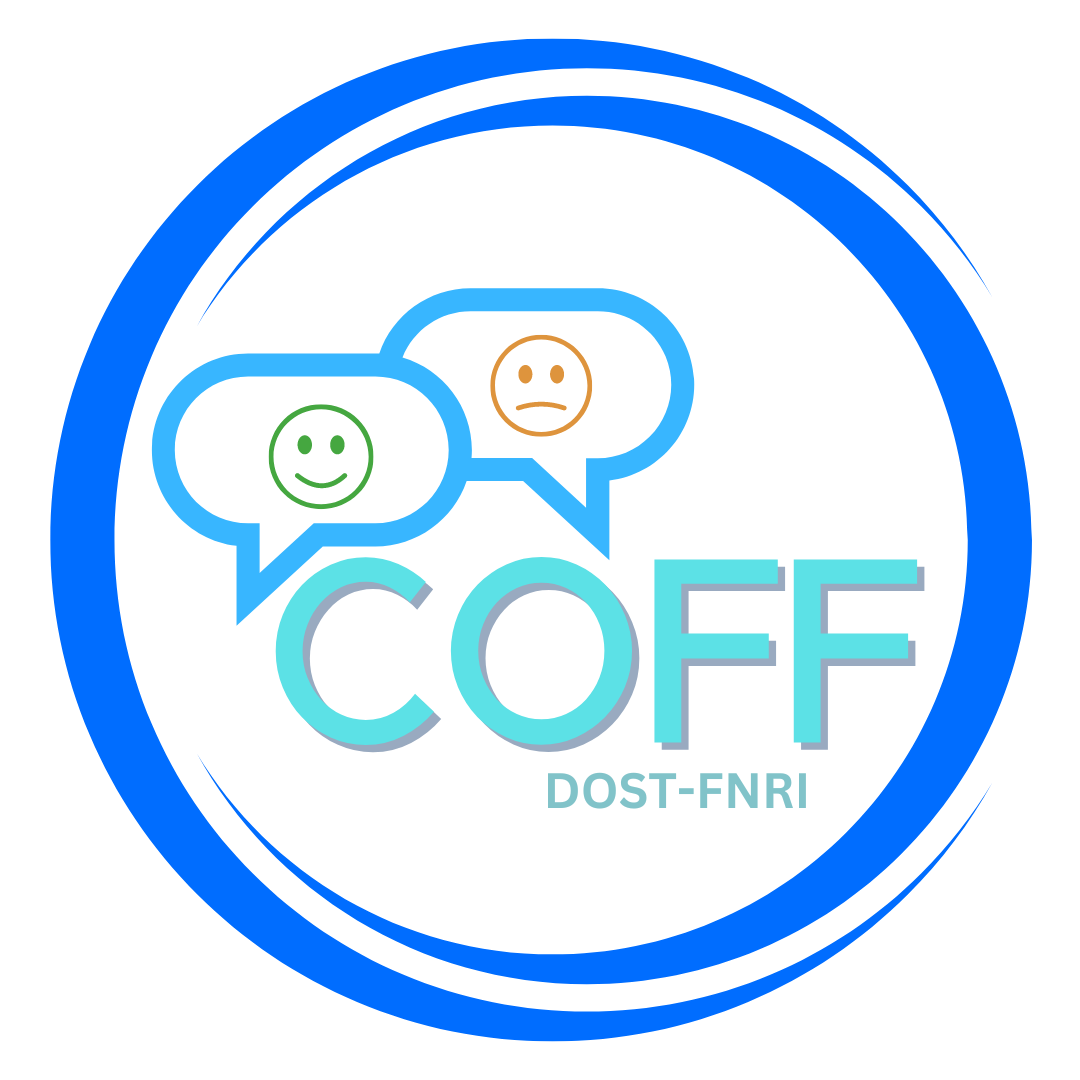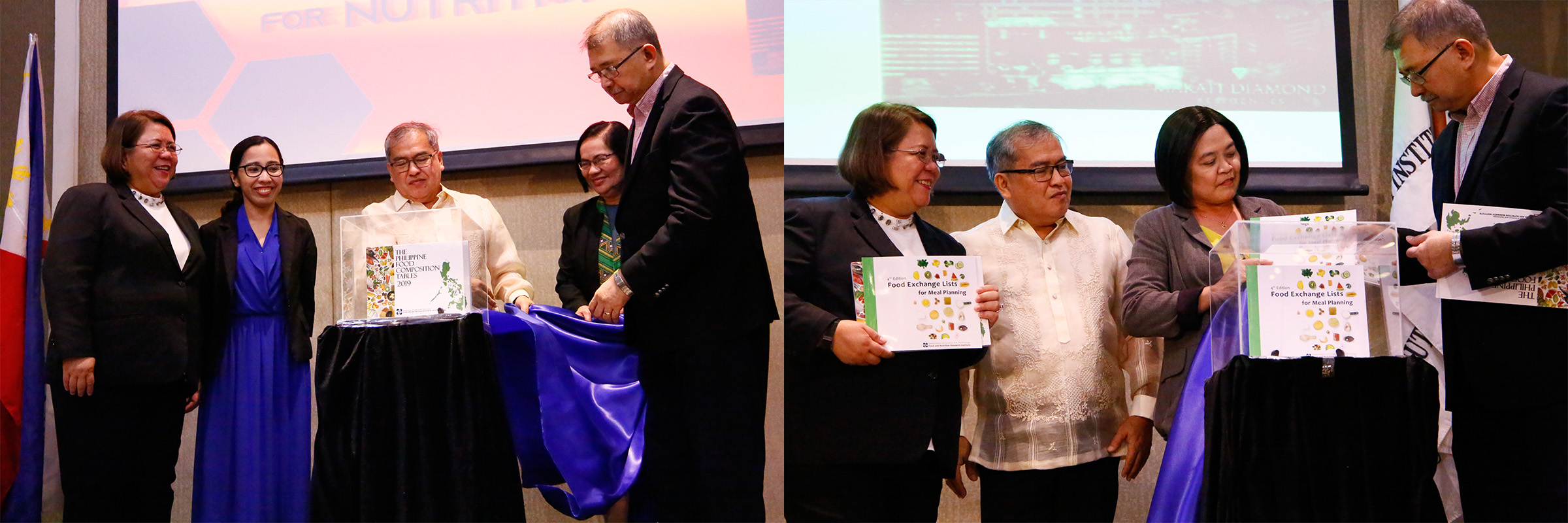The Department of Science and Technology‘s Food and Nutrition Research Institute (DOST-FNRI) will present its newly updated nutrition tools at the “Grand Launch of 2020: Perfect Vision for Nutrition” on February 19, 2020 at the Makati Diamond Residences, Legaspi Village, Makati City. These nutrition tools include the Philippine Food Composition Tables 2019 and the Food Exchange Lists (FEL) for Meal Planning, 4th edition. The development of these nutrition tools is aimed at improving the quality of life of Filipinos.
The 2019 Philippine Food Composition Tables
The DOST-FNRI, then the Institute of Nutrition (IN), recognized the importance of nutritional content of commonly-consumed foods in the Philippines as the scientific basis for crafting sound programs and policies on food and nutrition since the 1920s. Thus in 1947, the early compilation of Philippine food data on the proximate, minerals and vitamins was prepared. In 1950, the program on food composition analysis was conducted. And in 1951, the first Food Composition Tables (FCT) Recommended for Use in the Philippines Handbook I was published. From thereon, the FCT underwent six more revisions prompted by constant introduction of new foods in the food supply; discovery of food components that are associated with health and disease; and continuous improvement in analytical methods intervention and data quality assurance measures. To date, the DOST-FNRI remains to be the sole generator of food composition data in the Philippines.
The latest edition of the handbook, the 2019 FCT, is one of the Institute’s continuing efforts to update the knowledge of what is in the foods eaten by Filipinos. The handbook contains additional food items and food components with health implications like sodium, cholesterol, total sugar, total dietary fiber and fatty acids. It also features a new format for easy searching and reading by researchers and food and nutrition professionals.
As a nutrition tool, the Philippine FCT is widely used in dietary assessment to define the nutritional status of Filipinos. The handbook also finds useful application in the conduct of cost-effective and doable nutrition intervention programs; manufacture of food products; development of recipes, meals and menus for therapeutic diets and institutional catering; for commercial food service industry, in agricultural researches towards improving the food supply; and, in food trade and regulations, among others.
Food Exchange Lists (FEL) for Meal Planning, 4th edition
The Food Exchange Lists for Meal Planning developed by Registered Nutritionist-Dietitians (RNDs) is one of the basic nutrition tools in nutrition and dietetics that has been used for decades. In the Philippines, the first FEL, published in 1953, was designed primarily for the calculation of diabetic diets. The revised version in 1965 and again in 1994, was for both normal and therapeutic diets. The need to update the FEL emerged due to the advent of new foods and products that can influence the lifestyle and eating habits of individuals, and consequently the health of the Filipino population.
Thus, the FEL was updated and revised to facilitate dietary computations and recommend the use of a variety of foods. It also provides greater flexibility in meal planning and assists in meeting dietary management goals of clients.
The 4th edition of the FEL for Meal Planning now includes 200 new food items based on the updates of the Food Composition Tables, new food and food products available in the market, commonly-consumed food items from the 2013 National Nutrition Survey and the comments and suggestions of users and stakeholder-consultants from nutrition, medical and health organizations.
Other new features of the 4th edition of the FEL Handbook are the inclusion of food images, English and Filipino or common names of food items and glossary of terms. It also contains use of available carbohydrates instead of total carbohydrates and new computation methods for energy requirements and a lot more.
With the FEL for Meal Planning, 4th edition, the DOST-FNRI continuously provides an updated nutrition tool which can be used by nutritionist-dietitians as guide in planning meals and prescribing diets to their clients, health professionals in nutrition education as guide in medical nutrition therapy and as reference material in hospital clinics and academic institutions in teaching diet therapy. Fitness centers and other health care facilities can also use it as reference material for those who are under weight loss management.
Overall, the FEL helps simplify diet counseling.
Details of the prices and how to avail both handbooks will be posted via the DOST-FNRI official website and Social Media Pages.
For more information on food and nutrition, contact: Dr. Mario V. Capanzana, Director, Food and Nutrition Research Institute, Department of Science and Technology, General Santos Avenue, Bicutan, Taguig City; Telephone/ Fax Nos: 8837-2934 or 8837-3164; Direct Line: 8839-1839; DOST Trunk Line: 8837-2071-82 local 2296 or 2284; e-mail: This email address is being protected from spambots. You need JavaScript enabled to view it. or at This email address is being protected from spambots. You need JavaScript enabled to view it.; DOST-FNRI website: http://www.fnri.dost.gov.ph. Like our Facebook page at facebook.com/FNRI.DOST or follow our Twitter account at twitter.com/FNRI_DOST. (DOST-FNRI S & T Media Service: Press Release – MARILOU R. GALANG, Sr. SRS)












